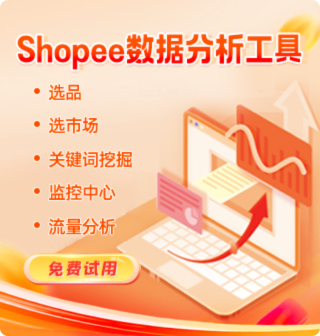-
用户114****4232
Shopee Payment: A Detailed Guide for Buyers and Sellers
Shopee, as one of the largest e-commerce platforms in Southeast Asia and beyond, has developed a robust and flexible payment ecosystem designed to enhance both buyer convenience and seller security. Understanding how Shopee payment works, the various payment options available, and related features is essential for smooth transactions and better business management on the platform. This article provides a comprehensive overview of Shopee payment methods, payment flow, security measures, and practical insights for merchants and consumers.
1. Overview of Shopee Payment System
Shopee’s payment system acts as the backbone of its marketplace, facilitating seamless transactions between buyers and sellers. The system handles order payments, escrow, disbursements, refunds, and commissions. At its core, Shopee employs an escrow payment model, which protects both parties: the buyer’s payment is held securely until the buyer confirms receipt of the item in satisfactory condition.
2. Payment Methods on Shopee
Shopee offers a variety of payment options tailored to different markets and customer preferences. These include:
ShopeePay: Shopee’s own e-wallet, enabling quick and cashless payments inside the app.
Credit/Debit Cards: Visa, MasterCard, and other major card brands are widely accepted.
Bank Transfers: Popular in markets where direct bank transfer is common.
Cash on Delivery (COD): Allows buyers to pay when they receive the item, reducing risk for those wary of online payments.
Internet Banking and Mobile Banking Apps: Integration with local banking apps for easy payment.
Third-Party E-wallets: In some countries, Shopee integrates with popular e-wallets such as GrabPay or GoPay.
The availability of payment methods varies by country, reflecting local payment habits and infrastructure.
3. How Shopee Payment Works: The Transaction Flow
Here is a simplified flow of how payment on Shopee operates:
Order Placement: Buyer selects products and chooses a payment method.
Payment Authorization: Payment is authorized and securely processed; funds are placed in Shopee’s escrow account.
Order Fulfillment: Seller ships the item to the buyer.
Buyer Confirmation: Upon receiving the order, the buyer confirms satisfactory receipt.
Payment Release: Shopee releases the payment to the seller’s account, deducting applicable fees.
Refunds/Disputes: If issues arise, Shopee’s customer service intervenes to resolve disputes, with possible refunds processed through the escrow system.
This model ensures fairness and confidence for both buyers and sellers.
4. Benefits of Using ShopeePay
ShopeePay, the platform’s proprietary e-wallet, offers several advantages:
Fast Checkout: Buyers can pay instantly without entering card details repeatedly.
Promotions and Cashback: ShopeePay users often enjoy exclusive discounts, cashback, and vouchers.
Secure Transactions: ShopeePay employs multiple layers of security, such as PINs and biometric login.
Wallet Top-Up Flexibility: Users can top up ShopeePay via bank transfers, card payments, or partner merchants.
Integration with Shopee Services: ShopeePay can also be used for bill payments, in-app purchases, and offline merchants in some countries.
For merchants, ShopeePay transactions tend to have higher successful payment rates and faster settlement.
5. Payment Security and Buyer Protection
Shopee places a strong emphasis on payment security and buyer protection through:
Escrow Payment System: Funds are only released to the seller after buyer confirmation, reducing fraud risk.
Secure Payment Gateways: Shopee partners with certified and PCI-DSS compliant payment providers.
Encryption and Data Protection: Sensitive payment data is encrypted and securely handled.
Dispute Resolution Mechanism: Buyers can raise disputes if the product is not as described or not received.
Shopee Guarantee: A buyer protection program that refunds payments for valid claims.
These features build trust in the platform and encourage more transactions.
6. Payment Settlement and Seller Payouts
From the seller’s perspective, understanding how and when payments are settled is crucial:
Settlement Cycle: After order completion and buyer confirmation, funds minus Shopee fees are released to the seller.
Payment Channels: Payouts are made directly to sellers’ linked bank accounts or digital wallets.
Processing Time: This can vary by country and payment method but typically ranges from 1 to 7 business days.
Transaction Records: Sellers can view detailed payment histories and transaction statuses in the Shopee Seller Center.
Efficient cash flow management depends on tracking these payments closely.
7. Cross-Border Payment Considerations
Shopee’s expansion into cross-border e-commerce introduces additional payment considerations:
Currency Conversion: Payments may involve currency exchange fees when buyers and sellers use different currencies.
International Payment Methods: Shopee supports international credit cards and payment gateways to facilitate cross-border sales.
Compliance with Regulations: Sellers and buyers must adhere to local financial regulations, including anti-money laundering laws.
Tax and Duties: Payment settlement may be affected by customs duties, VAT, or other taxes payable on cross-border transactions.
Sellers engaged in cross-border trade should pay attention to these factors to avoid surprises.
8. Practical Tips for Sellers Regarding Payments
Keep Bank Details Updated: Ensure your payout account information is accurate to avoid payment delays.
Monitor Transaction Status: Regularly check your Seller Center to track pending, successful, or failed payments.
Be Familiar with Fees: Understand the commission and payment processing fees deducted from your settlements.
Respond Promptly to Buyer Inquiries: Quick communication reduces dispute risk which can delay payment release.
Use ShopeePay for Better Cash Flow: Encourage buyers to use ShopeePay for faster payment processing.
Conclusion
Shopee’s payment system is a cornerstone of its e-commerce success, designed to safeguard the interests of both buyers and sellers while enabling a wide variety of payment methods to accommodate diverse market needs. The secure escrow model, combined with flexible payment options such as ShopeePay and COD, makes shopping and selling easier and more trustworthy. For sellers, understanding the payment flow, settlement schedules, and fees is essential for effective financial management. As Shopee continues to innovate its payment solutions, staying informed and leveraging these tools will be key to thriving in the competitive online marketplace.

